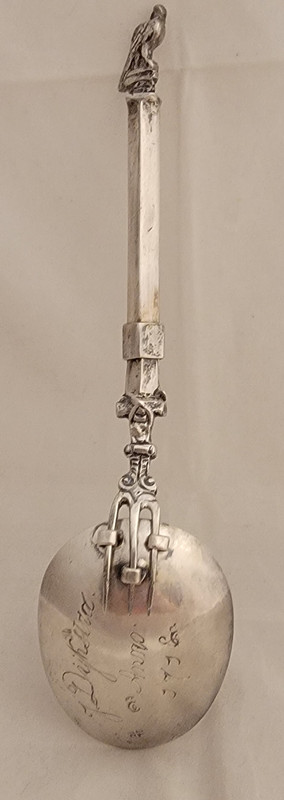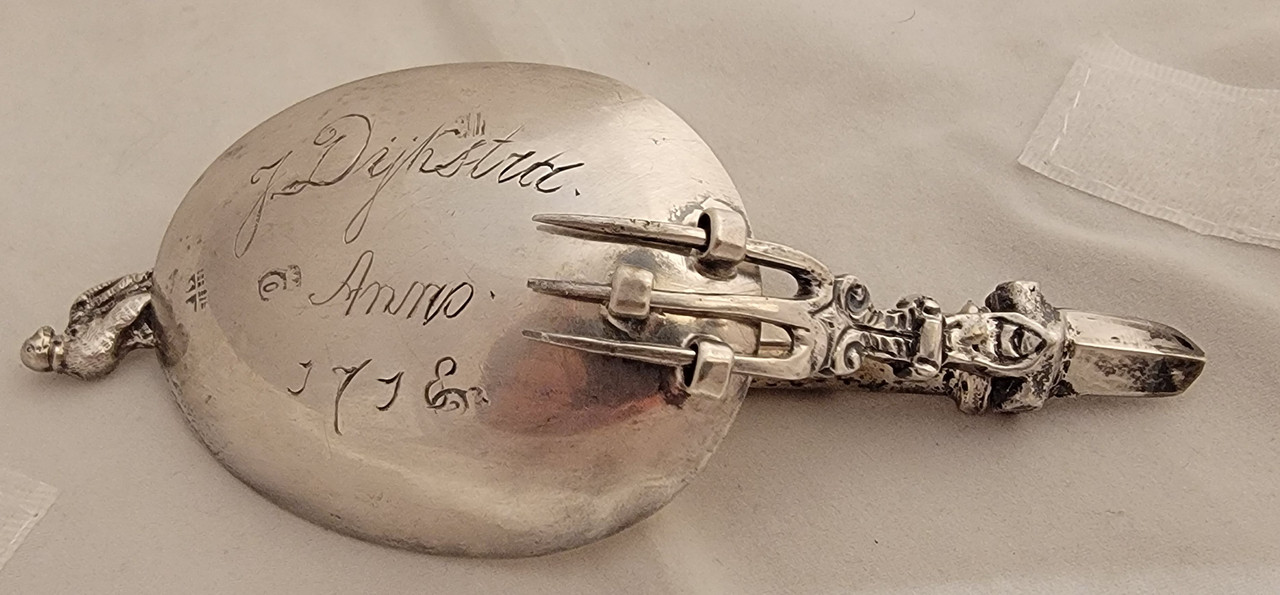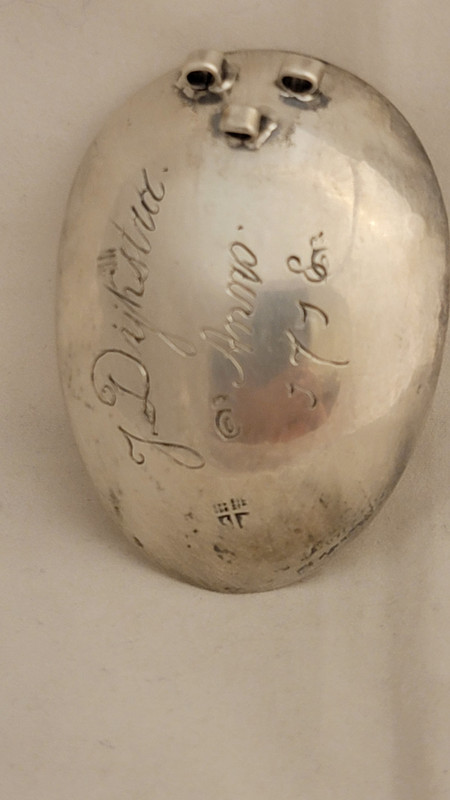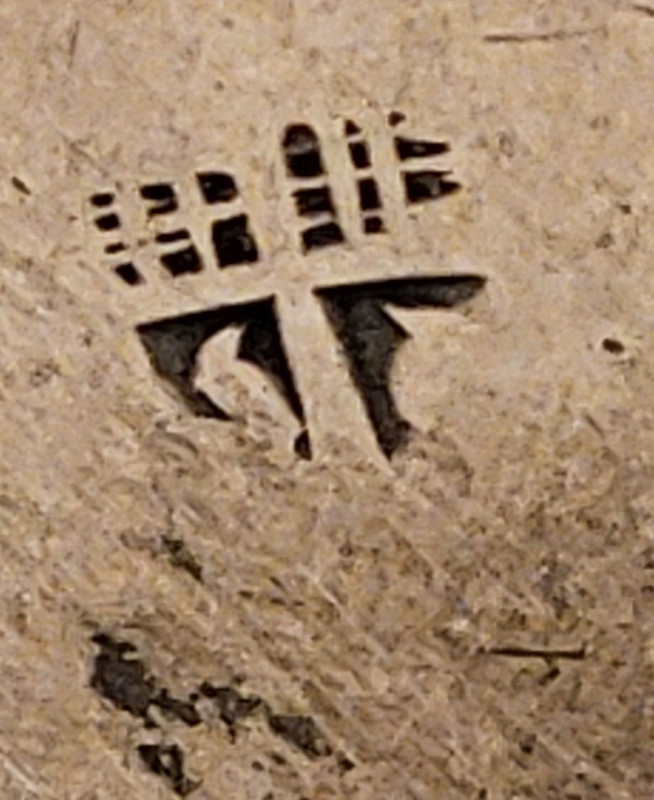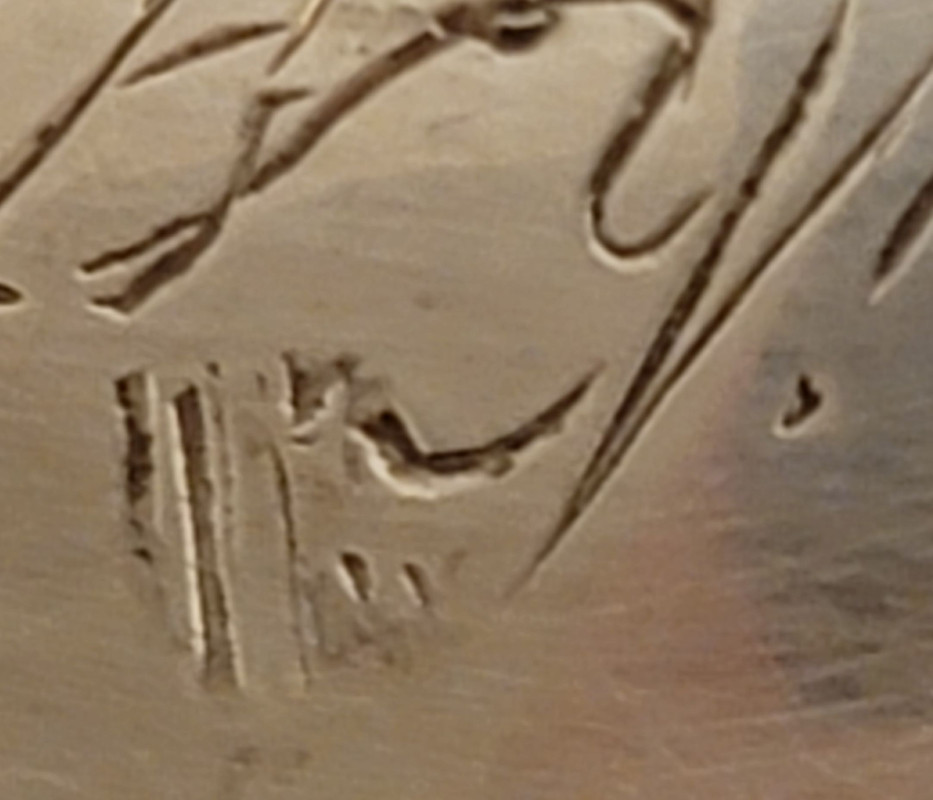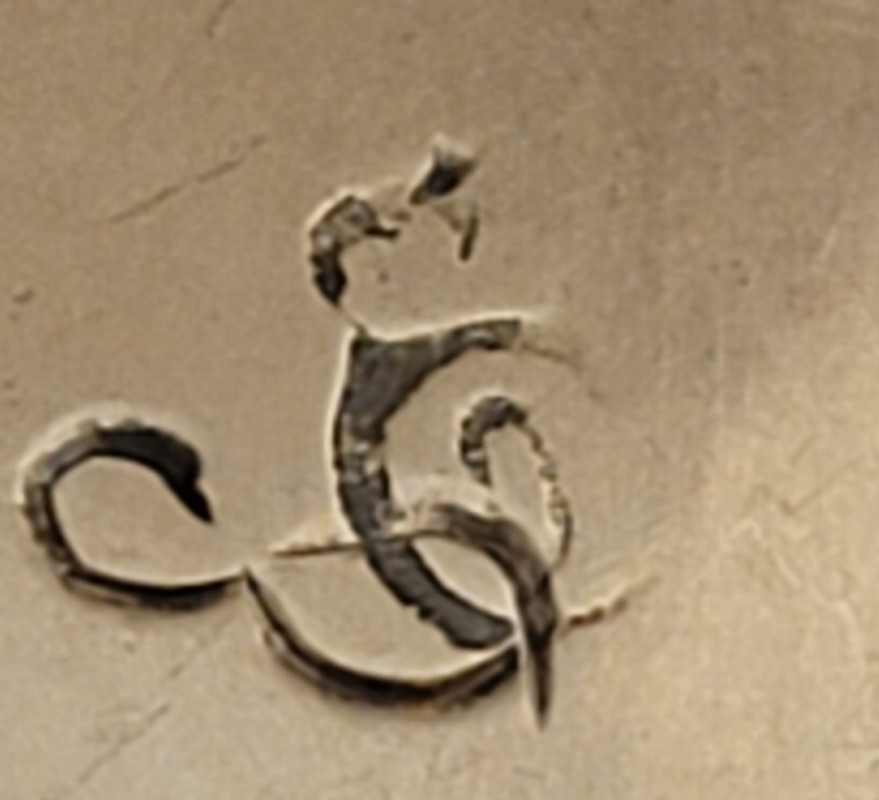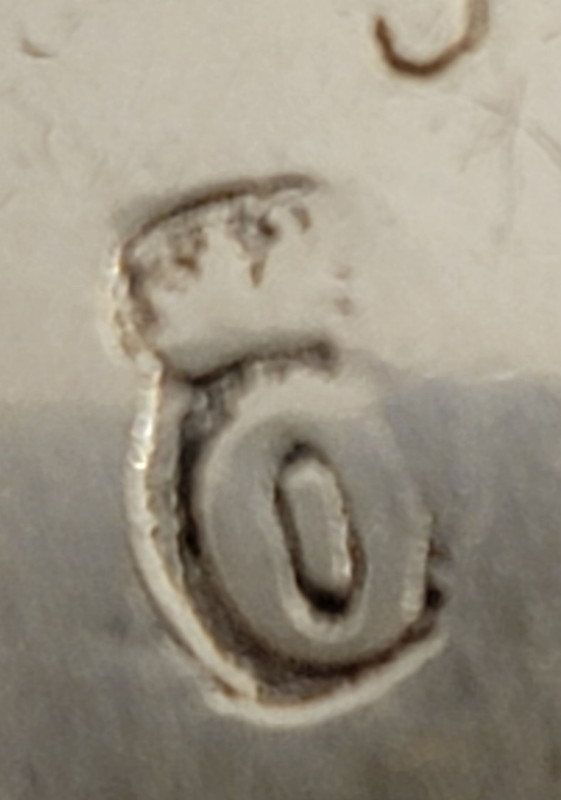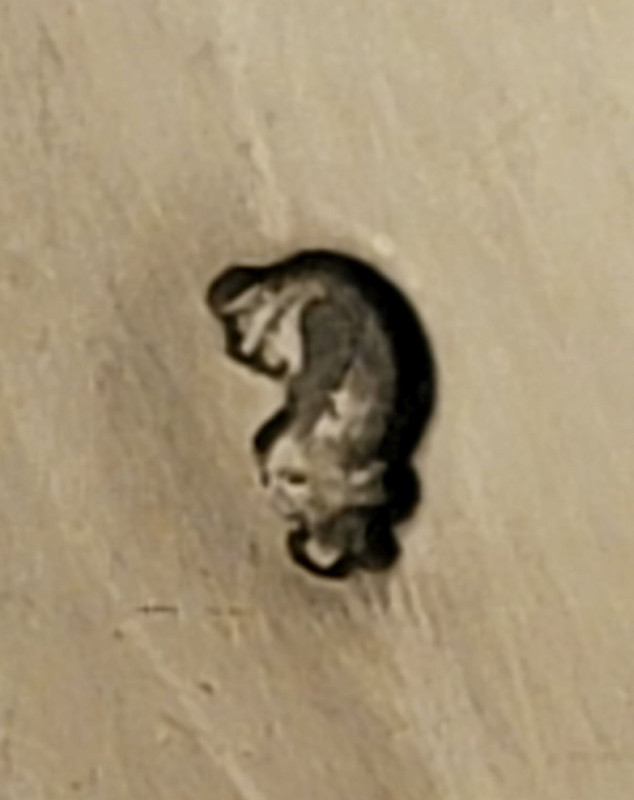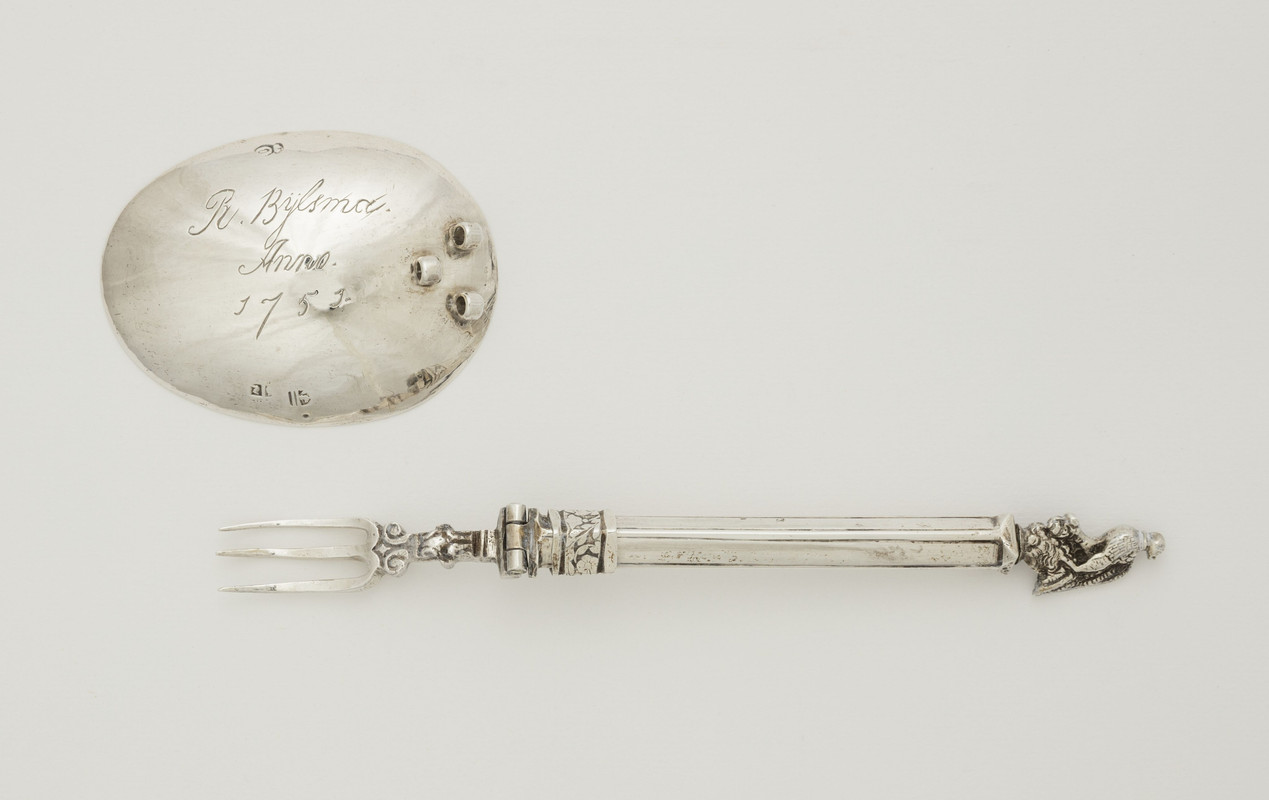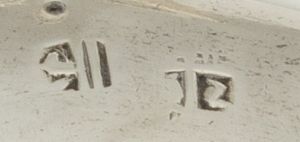Silver travelling cutlery set.
Combination of a fork and a spoon. Travelling sets can sometimes be folded around a hinge with a slide above it to secure the handle. The spoon's bowl has eyes on the bottom through which the tines of the fork are slid. This way the cutlery can be used as either a fork or a spoon. Introduced in the 17th century. In the 19th century, there was a revival of interest in this "novel" early type of utensil, plenty of replicas were/are made, some with pseudo marks.
Question is your set a replica with pseudo marks, 19th-20th century or older?
For convenience, (later style) the Dutch name J. Dijkstra from 1718 has been engraved in the bowl. The marks are not convincing.
At your set we see the crowned O twice, which is unusual ;

Crowned O
In March 1807, by order of the King of Holland, a new hallmark law on the working, importing and sale of gold and silver objects, including the levy of duty on the same was implemented. Silversmiths, retailers and silver- shop owners, and private residents could, for a few weeks, bring in their old hallmarked and previous made silver & gold objects and have those objects stamped with the crowned O, the capital letter O, the first letter for the Dutch word 'Onbelast'= duty-free; no tax duty had to be paid.
Below some examples of the correct crowned O's used in 1807;


 Pseudo town mark Harlingen or Rotterdam?
Pseudo town mark Harlingen or Rotterdam?
 The Dolphin mark
The Dolphin mark
The Dutch dolphin mark; the 1859 duty mark for new unguaranteed objects of national origin. This mark was used on all new silver objects below the legal standard of fineness, those with non-precious metal additions, and on new heavily gold or silver plated objects, as long as the average precious metal content after melting with the base metal was at least 250/1000. It was also struck on rejected objects which had been submitted at the lowest standard of fineness. In that case the maker had to choose between destruction or unguaranteed marking. This mark was sometimes also mistakenly used on old and foreign objects. Dolphin mark used from 1859-1893 and valid from 1859 till 1953.
Peter.
